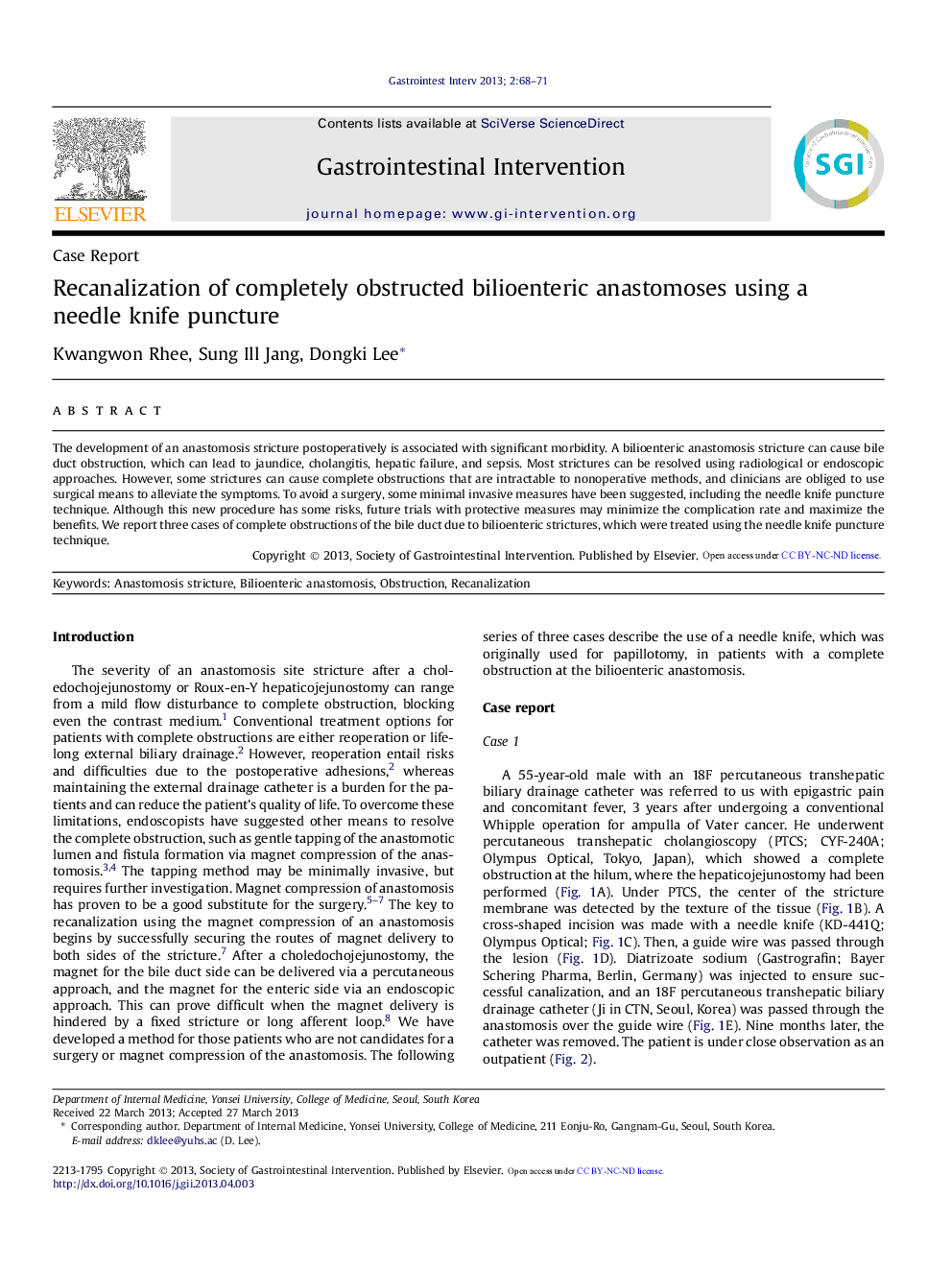| Article ID | Journal | Published Year | Pages | File Type |
|---|---|---|---|---|
| 3311009 | Gastrointestinal Intervention | 2013 | 4 Pages |
The development of an anastomosis stricture postoperatively is associated with significant morbidity. A bilioenteric anastomosis stricture can cause bile duct obstruction, which can lead to jaundice, cholangitis, hepatic failure, and sepsis. Most strictures can be resolved using radiological or endoscopic approaches. However, some strictures can cause complete obstructions that are intractable to nonoperative methods, and clinicians are obliged to use surgical means to alleviate the symptoms. To avoid a surgery, some minimal invasive measures have been suggested, including the needle knife puncture technique. Although this new procedure has some risks, future trials with protective measures may minimize the complication rate and maximize the benefits. We report three cases of complete obstructions of the bile duct due to bilioenteric strictures, which were treated using the needle knife puncture technique.
